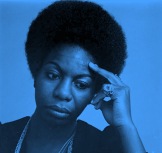By Camille Wanliss Ortiz

If there’s one thing Republicans have no problem doing, it’s lying through their teeth. Facts are like an appendix to them – no one really needs them. Vice presidential candidate Paul Ryan lied so much at the Republican National Convention in Tampa it’s amazing his pants didn’t burst into flames. Republicans should be commended though. In these tough economic times, they have single-handedly created the need for additional fact-checkers at news organizations nationwide.
There will be no shortage of deceit this campaign cycle. Here are just a few lies to get you to Election Day.
1. Non-living things are people too
Last year while campaigning in Iowa, Mitt Romney uttered these famous words, “Corporations are people, my friend,” which is ironic considering Mittens himself can barely be considered human. But if this were true, if corporations were living, breathing beings, then Romney should be considered a serial killer since many businesses saw their demise during his tenure at Bain Capital.
Republicans have also fought hard to consider women’s eggs as people too. Under the “Women’s Health and Safety Act,” which was signed into law earlier this year in Arizona, the assumption is that life begins two weeks prior to conception. Yes, you read that correctly. Ovulation = pregnancy. Laws on “personhood,” as it has come to be known, are also being considered in states such as Iowa, Florida, Georgia, North Dakota and Mississippi among others. But if eggs are people, shouldn’t sperm be considered people too? If so, then shouldn’t masturbation be outlawed? And what about fellatio? Isn’t that cannibalism? Hmm.
2.Voter fraud is widespread
According to the Brennan Center for Justice, there were at least 180 restrictive bills introduced in 41 states in 2011 to combat voter fraud. This included legislation requiring voters to show identification and proof of citizenship, and laws ending same-day voter registration and reducing early voting periods. But after a nationwide analysis of voter fraud found that there were only 10 credible cases since the year 2000, why are the Republicans passing these laws?
The answer is simple. After the electoral butt-whooping the Republicans faced in 2008, they devised a plan to ensure that the same record number of voters (mainly blacks, Latinos and young people) would not turn out this election cycle for President Obama. In Florida the suppression of votes seems to be paying off for the Republicans. This year, Republican registration was at 128,039 voters, up from 95,525 in 2008. Democrat registration on the other hand has dropped sharply. There were 11,365 voters registered this year, down from 259,894 in 2008.
3. They believe in fiscal responsibility
When Clint Eastwood was busy talking to a chair at the RNC, there was another invisible president in the room – George W. Bush. Remember him? It seems none of the fiscal conservatives do. During his eight years in office, Bush increased federal spending more than each of the six presidents that preceded him. By starting two wars, passing the Medicare Part D drug plan, and giving the wealthy several tax cuts while deregulating Wall Street, not only was Bush responsible for the nation’s great debt and huge deficit, but he was also the author of one of the greatest economic recessions in history. During his tenure, the federal budget increased 104% and discretionary spending increasedby 48.6%. Where was the Tea Party then?
4. Raising taxes on the wealthy will stifle the economy and prevent job creation
It is scientific fact that just the thought of a tax increase will cause Republicans to break out into hives. Ok, that’s a lie but so is the assertion that raising taxes on the wealthy will stifle the economy and kill job growth. Over the past two years Republicans have tried their best to make “rich” synonymous with “job creators” but the wealthy do not create jobs. Consumer demand does. During the middle of the last century, the tax rate for the richest Americans was over 90% and the economy and middle class thrived. But once Reagan came into office in 1980, the tax rates for the wealthy decreased while their income tripled. And since Bush’s election in 2000 the tax rate for the wealthy has been at 35% while the economy and middle class have seen the slowest growth.
5. The definition of marriage is between a woman and a man
This is true unless you’re Newt Gingrich or Donald Trump, then apparently marriage is between one man and three women. If you’re Arnold Schwarzenegger it’s between a married man and his maid. And if you’re Michelle Bachmann it’s between a woman and an allegedly closeted gay man.
6. They are pro-life
I think Sister Joan Chittister, a Benedictine nun interviewed on Bill Moyers Journal, said it best on the topic of pro-life:
“I do not believe that just because you’re opposed to abortion, that that makes you pro-life. In fact, I think in many cases, your morality is deeply lacking if all you want is a child born but not a child fed, not a child educated, not a child housed. And why would I think that you don’t? Because you don’t want any tax money to go there. That’s not pro-life. That’s pro-birth. We need a much broader conversation on what the morality of pro-life is.”
7. They believe in the Constitution and want limited government
Hey, remember that one time when George W. Bush created the Patriot Act, which essentially pissed on the Constitution, increased the government’s power to spy on everyone and dismantled the right to be free citizens? And remember all those time(s) Republicans started screaming about their constitutional right to bear arms and kill things and then created laws that infringed on the rights of gays to marry whoever they want and a woman’s right to choose what was best for her own body? Yeah good times.
Republicans are certainly an imaginative bunch. How else would they be able to deny global warming and coin a new term like “legitimate rape”?
What lies have you heard Republican tell?






